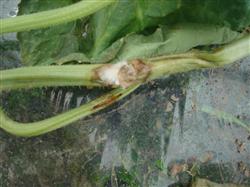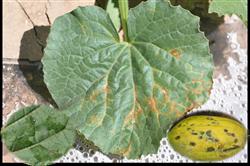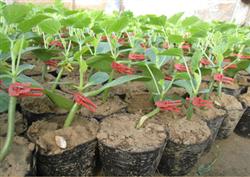Prevention and treatment of potassium deficiency in muskmelon

In the early stage of melon growth, the leaf margin appeared slight yellowing, first the leaf margin, then the interveinal yellowing, the order was very obvious; in the middle and later stages of growth, the same symptoms appeared near the middle leaves; the leaf margin withered and curled outward with the continuous growth of the leaves; there were significant differences in symptoms among varieties. Pay attention to the location of symptoms in the leaves, if the symptoms in the lower and middle leaves may be potassium deficiency; in the early growth stage, when the temperature is low and covered with cultivation (double-layer mulching), gas damage has similar symptoms; the same symptoms, if it occurs in the upper leaves, it may be calcium deficiency; potassium deficiency in the early growth stage is rare and occurs only when it is extremely deficient. After careful observation of the initial symptoms, when the leaf margin turns yellow, it is potassium deficiency, and when the leaf margin is still green, it is likely to be magnesium deficiency. Apply enough potassium fertilizer, especially in the middle and later stages of growth, pay attention to potassium deficiency; muskmelon plants absorb an average of 7 grams of potassium per plant, which is basically the same as nitrogen absorption, which should be considered in determining the amount of fertilizer application; apply adequate compost and other organic fertilizers; if potassium is insufficient, potassium sulfate can be used with an average of 3-4.5 kg per mu, once topdressing.
- Prev

How to deal with muskmelon seeds before planting
■ symptoms: the symptoms of bacterial fruit spot in common melon and Hami melon were similar to those of cucumber bacterial angular spot on cucumber leaves, but the disease infected the veins and spread along the veins. The disease spot on the leaf is round to polygonal, the edge is V-shaped water stain at first, then becomes thinner in the middle, and the disease spot is dry. The back of the plaque.
- Next

Management of melon fruiting period
Continuous cropping is the most avoided in muskmelon cultivation. In order to ensure the successful planting of muskmelon year after year, grafted seedlings are used to produce muskmelon, and the grafting method is mostly used. Muskmelon growers in Luannan County, Hebei Province improved the connection method and achieved good results. Choose pumpkin with strong disease resistance and cold resistance as rootstock with high yield.
Related
- Moge, come on! The staff of the peasant association in the producing area of cantaloupe were frightened when the crowd gathered.
- Causes and Solutions of low Fruit setting rate of Apple
- Symptoms and control measures of passion fruit virus disease
- Fruit growing lesson: how do apple orchards keep high yields?
- Can you build orchards in the mountains? What are the pros and cons?
- How to manage the coloring period of Crisson grape?
- This paper introduces the processing technology of two kinds of fig products.
- How much is a month for retired teachers in rural areas by 2020?
- How can strawberry planting increase sugar content? We should pay attention to management in many aspects.
- What are the cultivation techniques on how to improve the yield of golden fruit?

